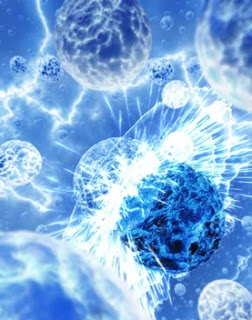 |
| ©iStock.com |
Topics: High Energy Physics, Particle Physics, Theoretical Physics
What’s the difference between matter and antimatter? Sometimes nothing, a new study finds.
Scientists at Brookhaven National Laboratory’s Relativistic Heavy Ion Collider (RHIC) discovered that antimatter protons, called antiprotons, act just like their ordinary-matter cousins when they are close enough to interact via the so-called strong nuclear force, which binds protons and neutrons together into atomic nuclei.
Antimatter is essentially the opposite of matter, in which the subatomic particles (protons and electrons) of antimatter have charges opposite to those of ordinary matter. In an ordinary block of stuff, for instance, the protons are positively charged, and the electrons carry negative charges. In antimatter, the antiprotons are negatively charged, while the antielectrons (called positrons) are positively charged. When antimatter and matter touch, they annihilate each other and produce energy in the form of gamma radiation.
Scientific American:
Antimatter Protons Stick Together Just Like Normal Particles
Jesse Emspak and LiveScience
Comments